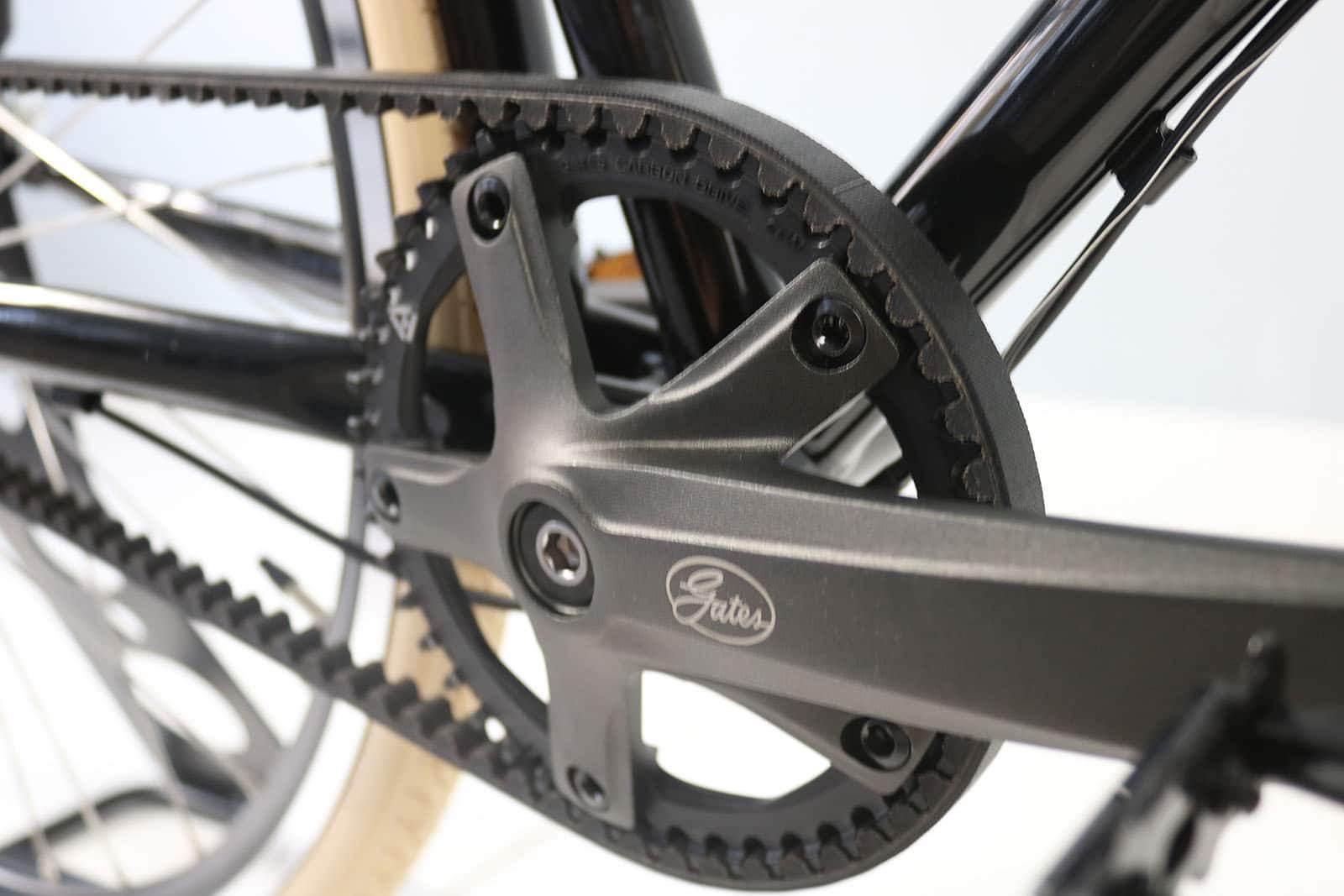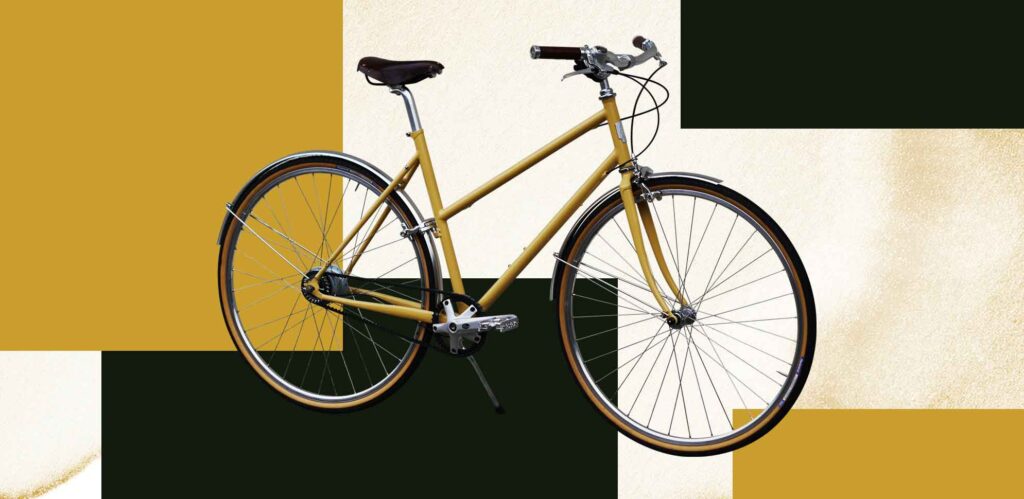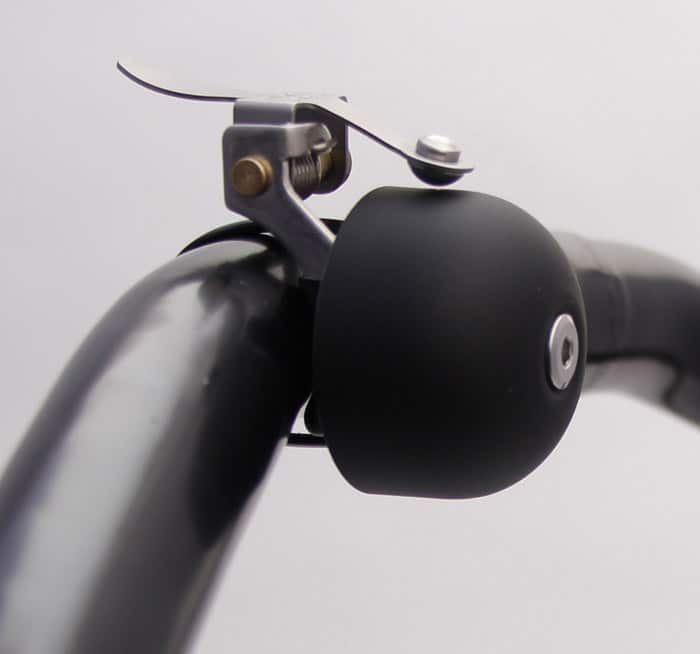Timing belt for the bike - never heard of it?
Everyone knows the classic bicycle chain. And now comes the so-called belt drive and makes it competition! Belt drive? What?
The invention is not entirely new but is now gaining more and more popularity. A belt drive basically consists of a carbon fiber belt that runs over two pulleys. The advantages of this drive speak for themselves – but more on that later. However, the belt has to make small concessions: Because the belt can only be mounted on specially prepared frames and can not be used in combination with a “derailleur”, but only as a singlespeed or with a hub gear.
But why do you need a special frame for this?
The special frame opening
The crank is outside and the sprocket (on the rear wheel) is inside the bike frame. This makes it impossible to connect the crank and sprocket with a fully closed chain or belt.
The bicycle chain can be split and rejoined at each link. Therefore, a chain can be installed on any frame without any problems. The belt, however, always comes closed from the factory and can not be opened, which is precisely a feature of its quality, stability and durability.
For most belts, it is therefore necessary to be able to open the bicycle frame so that the belt can be inserted. This opening places special demands on the frame construction. The frame must have been manufactured to the highest quality standards so that it does not warp at this point.

The advantages and disadvantages of the belt drive
We would like to list some advantages here.
#1 Low noise
The characteristics of a belt-drive make driving almost noiseless. So you can enjoy your surroundings and also the nature much better!
#2 No dirty pants and oil-smeared hands
A Gates belt does not need any oil to run smoothly. So dirty trouser legs are a thing of the past.
#3 Low maintenance
The belt drive can be easily cleaned with water if the last tour was a bit wilder. It needs neither a chain cleaner nor oil for lubrication. A chain without care, on the other hand, would be very quickly angry with you. Not only that you have with it strong drive loss. If you neglect the chain, you will damage not only the chain but also the entire drive system and ruin all the fun of riding.
#4 Durability
Even with the best of care, the chain will not last as long as a timing belt. Roughly speaking, a belt can last up to 30,000 kilometers, a chain around 10,000 kilometers. Of course, this always depends on factors such as dirt, weather and care. The rough rule of thumb is that a belt will last around two and a half to three times longer under comparable conditions.
Also:
The constant movement of the chain causes the connecting pins between the chain links to be ground smaller over time. This results in more play in the joints and thus elongation over time, which reduces the overall efficiency and effectiveness of the system. The belt is different: This cannot elongate because carbon fiber tensile cords run inside.
#5 Weight
It’s nuances, but the belt also wins over the chain in the weight comparison.
Disadvantages:
#1 Initial cost.
The initial cost of a timing belt is higher. What you can save on, however, are maintenance products and time, as the belt requires much less maintenance and can be cleaned with water.
#2 The chain has the better efficiency
The belt has slightly more efficiency loss at low power (i.e. slow pedaling) than a good running chain. However, for the everyday rider, these differences are usually not really noticeable. Rolling resistance, tire pressure, wind or completely unmaintained drives account for much more power loss. However, all those who pedal longer and harder (i.e. bring more power to the crank) have less loss of efficiency due to the belt. But as I said, all this is hardly noticeable for the everyday rider.
Whether you decide for the chain or a belt drive is of course up to you. Our frames make an installation possible at any time. The belt drive can also be retrofitted to our bikes.
So for whom does a belt drive make sense?
We recommend the timing belt for
- all frequent drivers. Due to the longer service life.
- All lazy bastards out there. Who simply have no desire to constantly clean their chain. And prefer to spend their time on the bike rather than in the workshop.
- all techies who just want to have the coolest bike in their circle of friends.
- all bon vivants who want to cycle in silence through nature.
- all long pants bike riders. You can leave the rubber around your trouser leg at home from now on. It looks funny anyway.
- all business people. See point 5. The suit trousers stay clean. It also looks pretty cool to cycle to work in a suit! By the way, we have cool front baskets for the briefcase.

Still undecided?
So here again all the advantages and disadvantages listed.
Advantages
- Quiet
- Grease-free
- Low maintenance
- Longer lasting
- Less weight (hardly noticeable)
Disadvantages
- Higher purchase costs
- Efficiency (hardly noticeable)
If you still don’t know exactly what you need or are unsure, we will be happy to advise you and answer your open questions. Or just come and visit us in person! Most of the time we have exhibitors in the store that you can test drive. To be on the safe side you can of course call us beforehand.
To all the belt drivers among us: What do you think of the belt drive? Leave us your opinion about it. Mail us!








